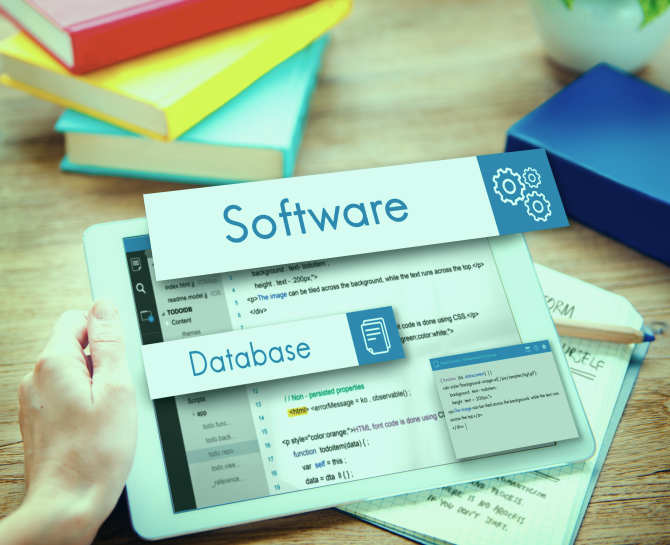
Why Every Business Needs a Dashboard to Connect Strategy With Daily Actions
Why every business needs a dashboard is clear when strategy and daily actions come together. Dashboards provide real-time visibility, track KPIs, and help teams take actionable steps that drive business goals forward. Read on.
How often do businesses craft ambitious strategies only to find that day-to-day activities do not reflect those goals? Leadership teams may set revenue targets, efficiency benchmarks, or expansion plans, yet employees on the ground often struggle to see how their tasks contribute to these larger objectives. The result is a disconnect where strategy remains on paper while execution drifts in different directions.
This gap is not due to lack of effort but lack of visibility. Data lives in scattered reports, progress is reviewed too late, and frontline teams rarely have a clear line of sight to strategic priorities. Without a mechanism to align vision with execution, businesses risk wasted effort, poor accountability, and missed opportunities.
A well-designed dashboard addresses this challenge. By bringing strategy, performance metrics, and daily activities into one accessible view, dashboards create clarity and alignment across the organization. They transform strategy from abstract planning into actionable guidance, helping businesses close the gap between what they aim for and what they achieve.
The Role of Dashboards in Business Strategy
Dashboards serve as the missing link by translating strategy into measurable and trackable elements. Instead of waiting for quarterly reviews or static reports, leaders and teams can monitor progress in real time.
Dashboards make strategic goals tangible through key performance indicators (KPIs) that reflect what matters most to the business. For example, if growth is the priority, a dashboard can display metrics such as customer acquisition rate, conversion performance, or recurring revenue. If operational efficiency is the focus, it may highlight cycle times, cost per unit, or resource utilization.
Beyond tracking numbers, dashboards foster alignment. Executives gain visibility into whether the organization is moving in the right direction, while employees understand how their daily actions contribute to larger objectives. This shared clarity strengthens accountability and reduces the risk of strategy drifting away from execution.
Key Features of an Effective Business Dashboard
A business dashboard is only as useful as the way it is designed. An effective dashboard does not overwhelm users with endless numbers but focuses on clarity, relevance, and actionability. The following features are critical to ensuring it connects strategy with daily execution:
- Clear Visualization of Metrics. Data must be displayed in charts, graphs, or progress indicators that make insights instantly recognizable. Clarity reduces the time spent interpreting numbers and helps leaders focus on decisions rather than analysis.
- Role-Based Customization. Executives may need high-level KPIs such as revenue growth or profitability, while sales teams may focus on pipeline health and lead conversion rates. Custom views ensure that every role has access to information relevant to their responsibilities.
- Real-Time Data Integration. Static reports often fail to capture fast-changing business environments. An effective dashboard pulls live data from CRMs, ERPs, financial systems, and marketing platforms to reflect current performance and trends.
- Accessibility Across Devices. With distributed teams and remote work becoming common, dashboards must be accessible from desktops, tablets, and mobile devices. This ensures that insights are not limited to office settings.
- Focus on Key KPIs. More data is not always better. A good dashboard highlights the few metrics that directly influence strategic objectives, preventing distraction from less important figures.
- Interactivity and Drill-Down Capabilities. Beyond surface-level metrics, users should be able to click into data to understand underlying causes. For instance, a drop in sales revenue can be investigated further to reveal whether it stems from fewer leads or lower conversion rates.
- Consistency and Standardization. A dashboard should present data in a standardized format across departments to avoid confusion. Uniform definitions of KPIs ensure that everyone is aligned and working with the same understanding.
Pro Tip- When these features come together, the dashboard becomes a daily decision-making partner, not just a reporting tool. It turns raw data into meaningful insight, making strategy execution more consistent and transparent.
Connecting Daily Actions With Metrics
Strategic goals often lose momentum at the execution level because employees cannot clearly see how their daily work influences the organization’s direction. Dashboards address this challenge by making team-level activities visible against organizational goals. Instead of isolated reports or delayed reviews, dashboards use real-time analytics to show progress as it happens.
A performance dashboard does more than display numbers. It provides a context-rich view that connects metrics to outcomes. For example, a raw figure such as “50 leads generated” becomes meaningful only when compared against a strategic objective like “increasing customer acquisition by 20 percent this quarter.” Dashboards ensure that every metric is interpreted in relation to larger goals, reducing the risk of teams chasing numbers that do not matter.
The impact is twofold. First, productivity improves because employees understand priorities and can focus on activities with the highest strategic value. Second, businesses gain the ability to perform forecasting, using live data trends to predict whether current actions are sufficient to achieve long-term targets. This predictive layer transforms dashboards into a tool for proactive management rather than reactive reporting.
Examples Across Functions
Sales: Tracking Deals Closed vs. Pipeline Goals
- A sales strategy may set a goal of achieving $2 million in revenue within a quarter. A dashboard translates this into actionable daily visibility by showing how many deals have closed, how much pipeline value is currently in progress, and which sales stages are underperforming.
- For sales representatives, this creates a motivational tool: they know whether their daily calls or meetings are pushing them closer to target. For leadership, forecasting models can predict whether the pipeline is healthy enough to meet quarterly goals. If not, corrective action, such as focusing on higher-value accounts, can be taken early rather than after the fact.
Marketing: Monitoring Campaign ROI vs. Brand Growth Objectives
- Marketing often runs multiple campaigns across channels, each with its own metrics. Without a dashboard, teams may celebrate high click-through rates while missing the fact that conversions remain flat. A dashboard aligns campaign KPIs with the strategic objective of brand growth, showing how each campaign contributes to metrics like customer acquisition, retention, or lifetime value.
- For example, if the strategic aim is to expand into a new market segment, the dashboard can highlight whether campaigns targeting that audience are generating qualified leads. This ensures that marketing budgets are directed toward initiatives that move the brand closer to its strategic positioning, not just campaigns with surface-level engagement.
Operations: Efficiency Benchmarks Tied to Cost Reduction Strategy
- Operations teams often work on optimizing cycle times, resource utilization, or defect rates. A dashboard ties these efficiency benchmarks directly to a cost reduction strategy. For instance, reducing production time by 10 percent can translate into significant savings that align with corporate financial goals.
- Forecasting capabilities add another layer of value. If operational data suggests that delays in one part of the supply chain will increase costs next month, managers can adjust staffing or procurement immediately. This real-time alignment ensures that operational improvements are not just incremental fixes but deliberate actions supporting strategic cost reduction.
Choosing the Right Dashboard Tools
Selecting the right dashboard tool is a critical step for businesses aiming to connect strategy with daily actions. The effectiveness of a dashboard depends not just on its visual appeal but on its ability to integrate with existing systems, scale with growth, and present actionable insights in a clear and flexible manner.
DiGGrowth
DiGGrowth provides growth-oriented analytics and predictive insights, helping teams forecast trends and adjust actions proactively. It integrates with multiple data sources, scales easily as the business grows, and offers flexible visualization for both strategic and operational metrics, ensuring teams can see the connection between their daily work and organizational goals.
Power BI
Power BI excels in integration with Microsoft systems, allowing seamless connection with CRM, ERP, and spreadsheets. Its scalability makes it suitable for both small teams and large enterprises, while its visualization capabilities support interactive dashboards that translate strategy into clear, actionable daily insights.
Tableau
Tableau is known for its advanced visualization and interactivity, enabling employees to quickly interpret KPIs. It connects with various data sources, scales for enterprise-level complexity, and allows customization so dashboards reflect the organization’s specific goals. This makes it ideal for businesses that need visually intuitive tools to drive engagement with strategy.
Looker
Looker offers deep analytical querying and robust cloud database integration. It provides real-time visibility into metrics, scales effectively for growing organizations, and presents insights in a format that teams can immediately act upon, helping close the gap between strategic intent and day-to-day execution.
Google Data Studio
Google Data Studio prioritizes ease of use and seamless connection with Google products. It is particularly suitable for small to mid-sized teams that need flexible, visual dashboards without heavy technical overhead, while still supporting integrations and scalable reporting for growing businesses.
Criteria That Matter
When selecting a dashboard tool, businesses should evaluate several key criteria to ensure it supports the connection between strategy and daily actions effectively:
Ease of Integration
The tool should integrate smoothly with existing systems such as CRM, ERP, spreadsheets, and APIs.
Integration ensures that data flows automatically, reducing manual updates and allowing real-time visibility across departments.
Scalability
- The chosen dashboard should support both small businesses and large enterprises.
- As organizations grow, the tool should handle increasing data volume, user count, and complexity of analytics without performance issues.
Flexibility in Visualization
- Effective dashboards allow customization of charts, graphs, and KPIs to match the organization’s unique needs.
- Interactive and visually intuitive dashboards help teams quickly interpret data, identify trends, and act on insights.
Pro Tip- A well-selected tool ensures that KPIs, team activities, and results are visible, understandable, and actionable at every level of the organization.
Key Takeaways
- Dashboards bridge the gap between high-level strategy and everyday actions.
- Real-time metrics enable faster decision-making and proactive problem-solving.
- Tailored dashboards improve alignment and accountability across teams.
- Interactive and visually clear dashboards turn data into actionable insight.
- Choosing the right tool and implementing it thoughtfully ensures sustained impact.
Conclusion
A well-designed dashboard transforms how organizations operate by providing a clear line of sight from strategy to execution. It empowers teams to focus on actions that truly matter, fosters alignment across departments, and turns raw data into meaningful insights that drive performance. By making priorities visible and measurable, dashboards enable leaders to respond to trends, predict outcomes, and guide their teams with confidence, rather than relying on assumptions or delayed reports.
Ready to see your strategy in action and take control of your business performance? Let’s Talk!
Our experts at DiGGrowth can help you design and implement dashboards that connect every level of your organization to measurable outcomes. Get started with us at info@diggrowth.com and we’ll get back to you.
Ready to get started?
Increase your marketing ROI by 30% with custom dashboards & reports that present a clear picture of marketing effectiveness
Start Free Trial
Experience Premium Marketing Analytics At Budget-Friendly Pricing.

Learn how you can accurately measure return on marketing investment.
Additional Resources
How Predictive AI Will Transform Paid Media Strategy in 2026
Paid media isn’t a channel game anymore, it’s...
Read full post postDon’t Let AI Break Your Brand: What Every CMO Should Know
AI isn’t just another marketing tool. It’s changing...
Read full post postFrom Demos to Deployment: Why MCP Is the Foundation of Agentic AI
A quiet revolution is unfolding in AI. And...
Read full post postFAQ's
Yes, dashboards clarify priorities, show real-time progress, and help teams focus on actions that directly impact strategic goals, leading to higher efficiency and accountability.
Yes, dashboards help small businesses track key metrics efficiently, align team efforts, and make informed decisions without requiring large analytics teams or complex systems.
Implementation can range from a few days for basic setups to several weeks for complex, integrated dashboards, depending on data sources, customization, and user training
Dashboards provide centralized, accessible views of performance data, enabling remote teams to stay aligned, track progress, and collaborate effectively regardless of location.


